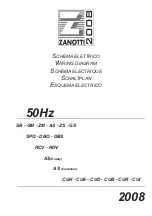
Instructions for Use
65
Important
•
If you've bought this appliance to replace an old
one equipped with a lock that cannot be opened
from inside (lock, bolt), make sure that the lock is
broken. This will make it impossible for the
children to lock themselves in the appliance and
suffocate.
•
Mind to connect the appliance correctly to the
mains supply (see Connection to the Mains
Supply).
•
Do not touch the cooled surfaces while the
appliance operates, especially not with wet
hands, because the skin might stick to the cold
surfaces.
•
Carefully check the foods for color and smell
and if you are in doubt about their quality, throw
them away because they may be spoiled and
therefore dangerous to eat.
•
Disconnect the appliance from the mains
before repairing (only a qualified technician
should repair it) and before cleaning.
•
Do not defrost the appliance with other electric
devices (hair dryer etc.) and never scrape the
ice or frost layer with sharp tools. Use only
enclosed tools or tools recommended by the
manufacturer.
•
For the sake of environment protection - be
careful not to damage the rear wall of the
appliance (the condenser unit or the tubes - for
example when moving the appliance) or any
part of the refrigerating system inside the
appliance.
•
The refrigerating system of the appliance is
filled with refrigerant and oil, so when the
appliance is damaged, handle it with care and
dispose it of in compliance with environmental
protecting precautions. (See We Care for the
Environment).
•
In the supply cord is damaged, it must be
replaced by the manufacturer or his service
agent or a qualified person in order to avoid
hazard.
•
The rating plate is in the interior or on the rear
wall of the appliance.
This appliance is marked according to the
European directive 2002/96/EC on Waste
Electrical and Electronic Equipment (WEEE).
This guideline is the frame of a European-
wide validity of return and recycling on Waste
Electrical and Electronic Equipment.
Disposing of the Worn Out
Appliance
•
When your appliance finally wears out, dispose it
of. If the appliance has a lock, break it, in order
to prevent eventual accidents (danger of children
get locked inside the appliance).
•
The refrigerating system of the appliance is
filled with refrigerant and insulating substances
which should be separately treated and
processed. Call your nearest authorised service
agent or specialised servicing centre. If you
don't find one, contact your local authorities or
your distributor. Be careful not to damage the
tubes on the rear wall of the appliance (danger
of pollution).




























